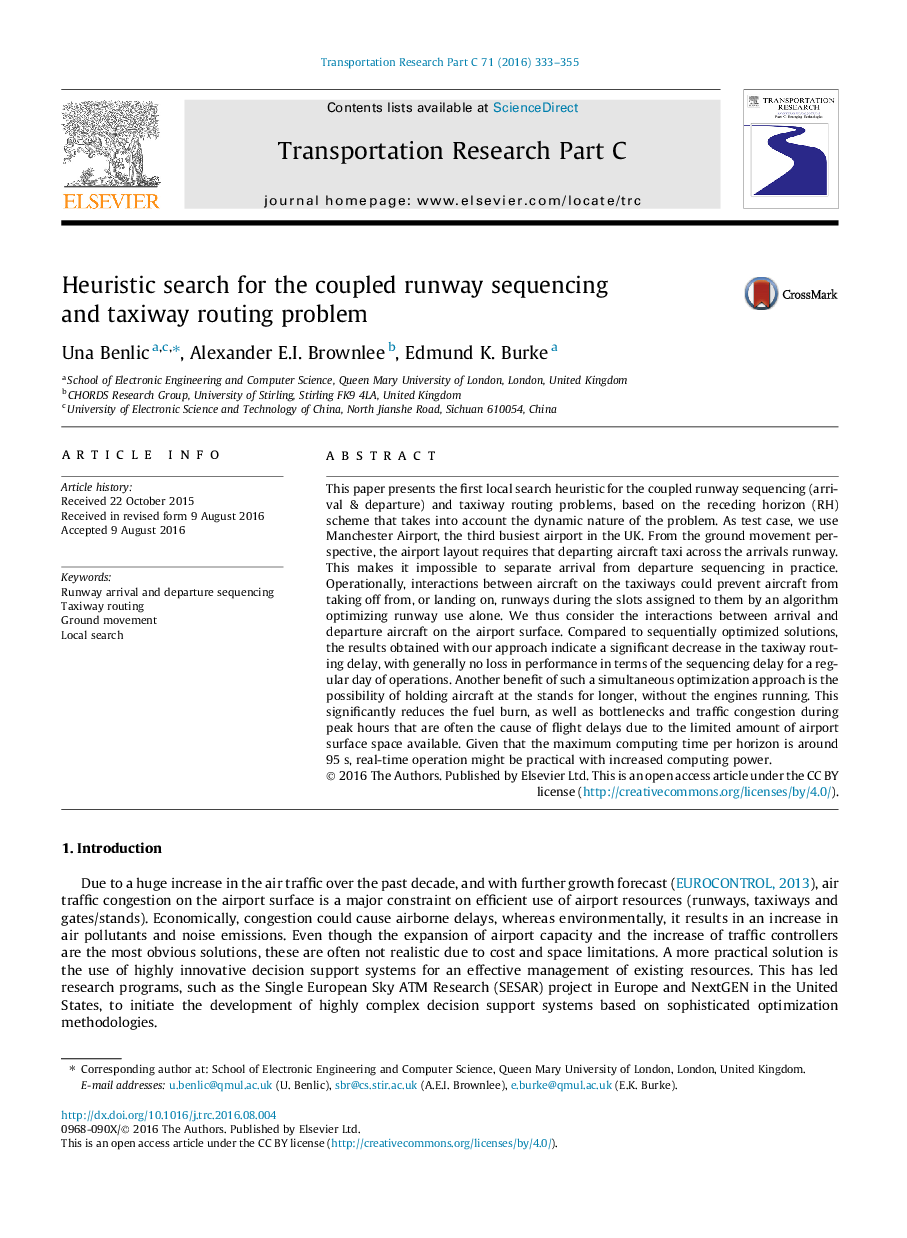| Article ID | Journal | Published Year | Pages | File Type |
|---|---|---|---|---|
| 6936328 | Transportation Research Part C: Emerging Technologies | 2016 | 23 Pages |
Abstract
This paper presents the first local search heuristic for the coupled runway sequencing (arrival & departure) and taxiway routing problems, based on the receding horizon (RH) scheme that takes into account the dynamic nature of the problem. As test case, we use Manchester Airport, the third busiest airport in the UK. From the ground movement perspective, the airport layout requires that departing aircraft taxi across the arrivals runway. This makes it impossible to separate arrival from departure sequencing in practice. Operationally, interactions between aircraft on the taxiways could prevent aircraft from taking off from, or landing on, runways during the slots assigned to them by an algorithm optimizing runway use alone. We thus consider the interactions between arrival and departure aircraft on the airport surface. Compared to sequentially optimized solutions, the results obtained with our approach indicate a significant decrease in the taxiway routing delay, with generally no loss in performance in terms of the sequencing delay for a regular day of operations. Another benefit of such a simultaneous optimization approach is the possibility of holding aircraft at the stands for longer, without the engines running. This significantly reduces the fuel burn, as well as bottlenecks and traffic congestion during peak hours that are often the cause of flight delays due to the limited amount of airport surface space available. Given that the maximum computing time per horizon is around 95Â s, real-time operation might be practical with increased computing power.
Keywords
Related Topics
Physical Sciences and Engineering
Computer Science
Computer Science Applications
Authors
Una Benlic, Alexander E.I. Brownlee, Edmund K. Burke,
